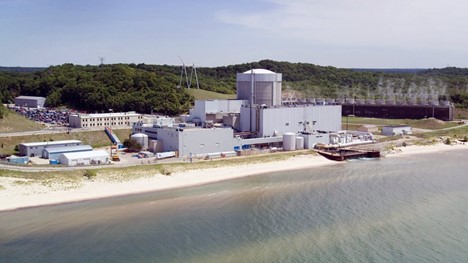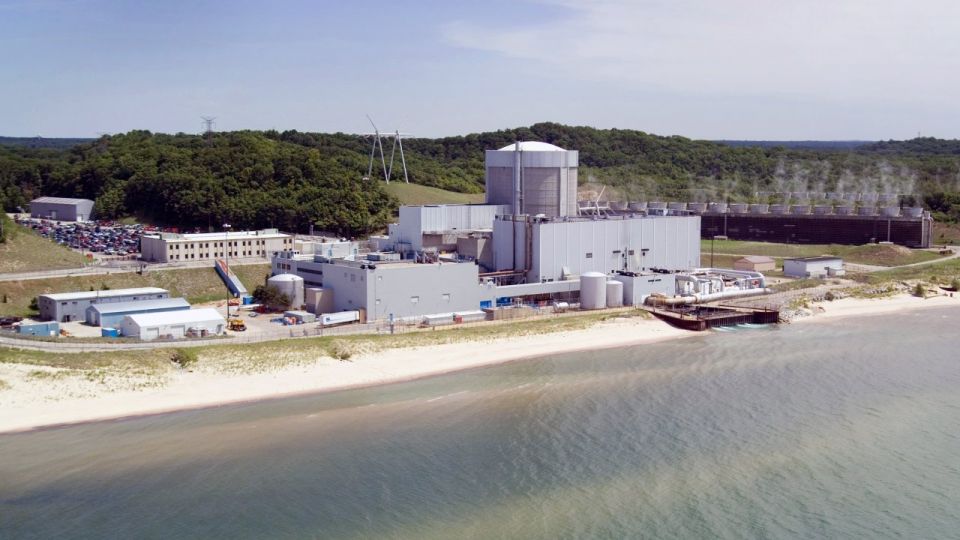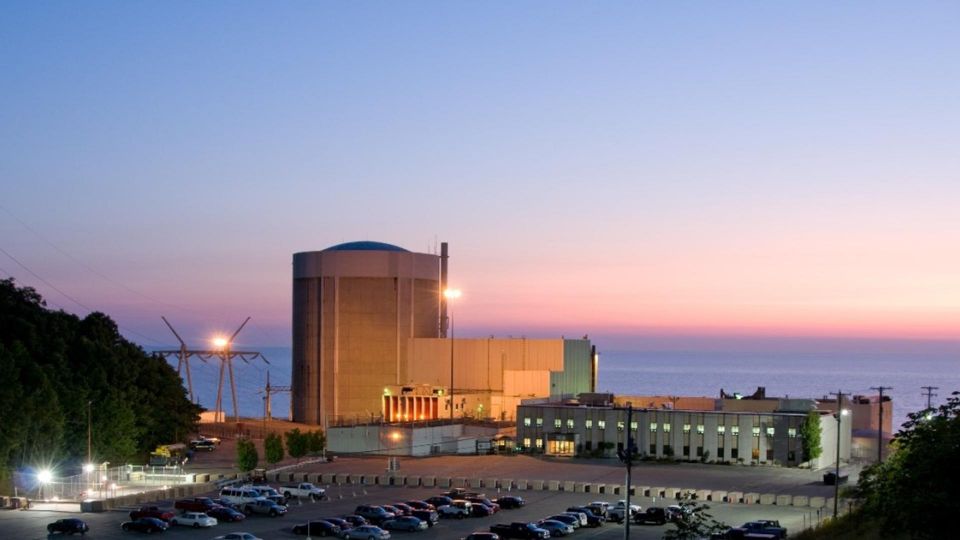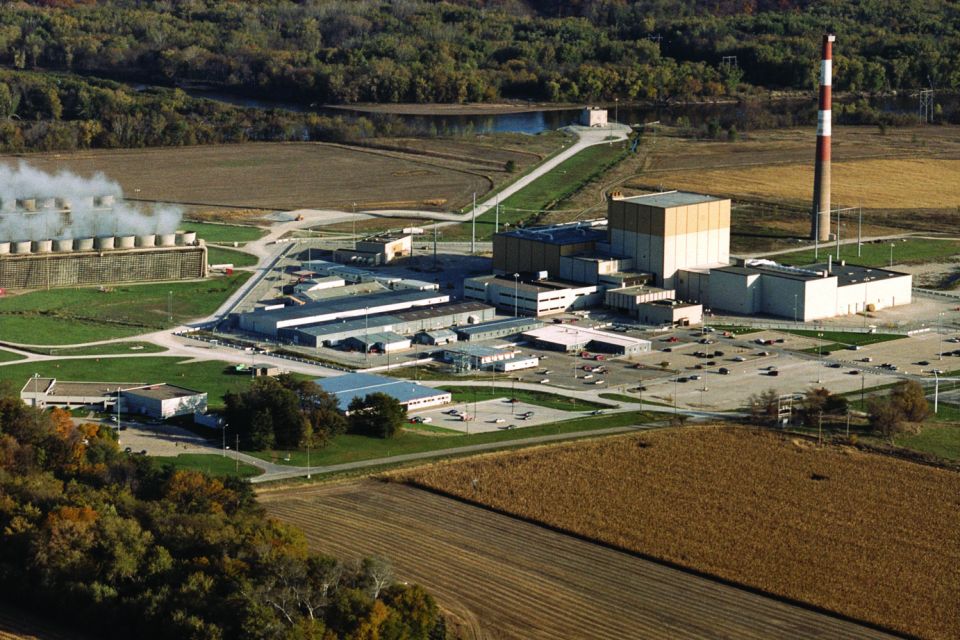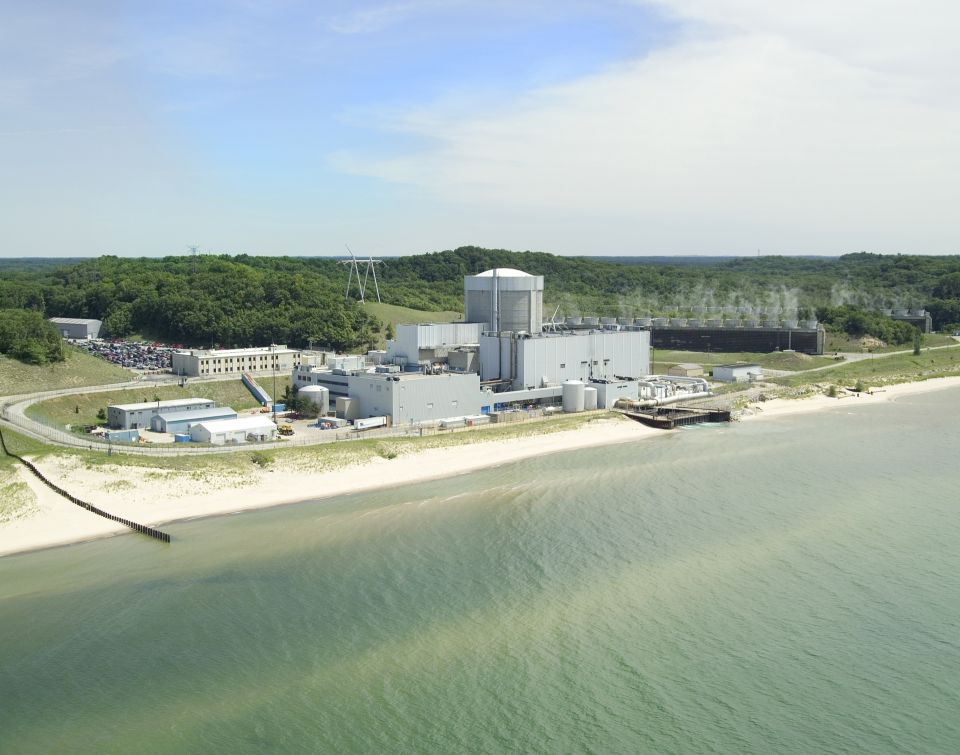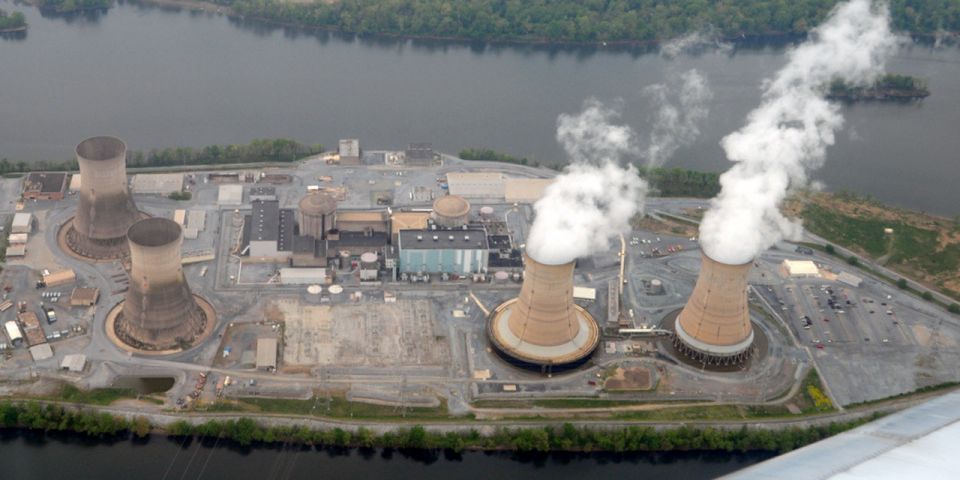The Palisades plant near Covert, Mich. (Photo: Entergy)
“Many states have made carbon dioxide–reduction plans with no hope of success. But if they want to meet even a portion of those goals, they must put nuclear power back on the table.” So opined Tim Cavanaugh, senior editor at the Mackinac Center for Public Policy, in an essay published by The Hill on March 23.
Focus on Palisades: Cavanaugh’s essay centered on Michigan, a state that “soon will lose at least 5.8 million annual megawatt-hours of carbon dioxide–free energy production” because of the scheduled May shutdown of the Palisades Nuclear Generating Station. Cavanaugh noted that this is the annual amount of energy produced by the Michigan wind industry, which the state has vigorously promoted for the past 13 years. He added that the Palisades nuclear facility, in operation since 1973, produced 7 million megawatt-hours of energy in 2021.
Despite Palisades’ high productivity, the nuclear plant has been forced to close down about 10 years before its operating license expires because of “perverse pricing challenges in the energy market,” according to Cavanaugh.
Reaching zero emissions: Cavanaugh observed that this “loss of CO2-free energy deals a traumatic blow to [Michigan] Gov. Gretchen Whitmer’s plan to take the state to zero emissions by 2050. Yet hardly anybody’s talking about it—certainly not the governor herself.” Cavanaugh then bluntly asserted, “Whitmer’s plan to reach zero emissions in 28 years cannot be achieved without nuclear technology.... Without nuclear energy, the state will see no appreciable reduction in emissions.”
A distorted market: “Nuclear power produces 82 percent of the state’s CO2-free electricity,” continued Cavanaugh. “The other 18 percent comes from wind, solar, and incidental renewables, which can’t make up the energy that will be lost when Palisades shuts down.” Furthermore, he quoted a Princeton University engineer who characterized wind and solar as “reliably unreliable.”
Cavanaugh wrote that Michigan needs new nuclear capacity, but that is unlikely “because a tangle of energy subsidies has distorted a market where lowest-price energy bids set the market price.... Most or all types of energy receive some form of taxpayer subsidy, but only a small percentage of that taxpayer support goes to nuclear power. If all subsidies disappeared, the nuclear industry would survive. Wind and solar would not.”
Cavanaugh urged Whitmer and other state governors, as well as federal leaders, to “end energy subsidies of all kinds and leave the field to players that can meet CO2-reduction demands while providing reliable energy.” He concluded that “Whitmer and other governors must stop their rigid and superstitious opposition to nuclear energy.”
